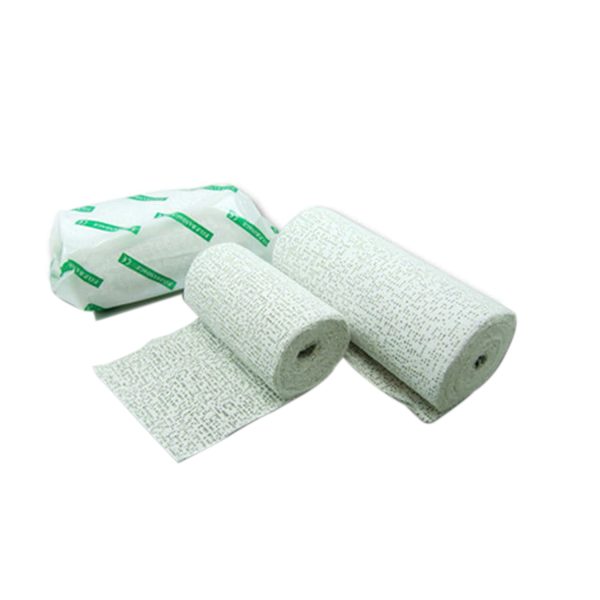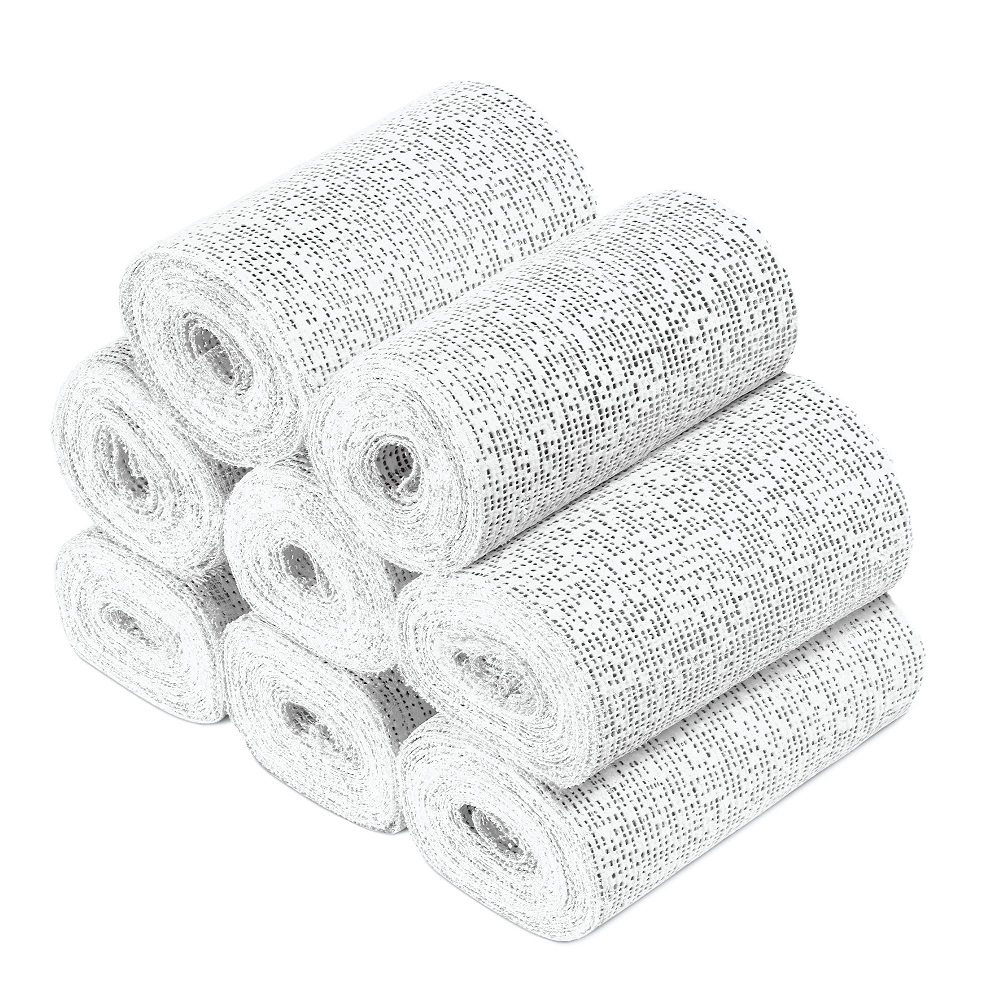Introduction to Plaster of Paris Casts
Plaster of Paris has been a reliable medium for creatives and medical professionals alike. It’s a versatile material used in art projects, constructions, and medical applications like casting broken bones. This guide will delve into the art of crafting plaster of Paris casts, demonstrating the process from start to finish. We’ll cover safety precautions, materials needed, and each step in creating an impressive cast. Whether crafting detailed sculptures or setting casts for healing purposes, plaster of Paris is favored for its ease of use and excellent results. Let’s start this journey by preparing to make your own plaster of Paris casts, highlighting essential techniques and tips for success.
Preparing for Cast Creation: Safety and Materials
Before diving into the world of plaster of Paris casts, it’s crucial to prioritize safety and gather all necessary materials. Not only does this step ensure a smoother creation process, but it also protects you from potential hazards.
Safety Precautions
Always protect yourself when working with plaster of Paris. Dust from the material can irritate your lungs, so wear a dust mask at all times. Skin contact should be minimized, so don latex gloves to prevent irritation or allergic reactions.
Gather Your Materials
Having the right materials on hand is vital for a successful plaster cast. You will need:
- Plaster of Paris powder
- Water for mixing
- A clean mixing container
- Stirring tools such as a spatula or a wooden stick
- A dust mask and gloves for safety
- Petroleum jelly or a commercial release agent
- Mould-making materials, which could include clay, wood, or an existing object for duplication
Remember, the quality of your materials can affect the final outcome of your cast. Therefore, choose high-grade plaster and other components for the best result.
Preparing Your Workspace
A clean and organized workspace is conducive to a seamless casting process. Make sure your surface is protected with a plastic sheet or newspaper, as plaster can be messy. Keep your tools and materials within reach to streamline your workflow.
With your safety measures in place and materials ready, you’re set to move on to crafting your master sculpture for the mould-making process.

Master Sculpture: Crafting the Initial Model
Creating the initial model, or ‘master’, is the first crucial step in generating a plaster of Paris cast. This master sculpture is what will shape your final cast and needs to be crafted with precision and care. Let’s guide you through this process, ensuring you have everything you need for a perfect starting point.
Developing Your Masterpiece Concept
Start with a clear idea or blueprint of what you want to create. Whether it’s a sculpture or a model for a medical cast, your vision should guide your design process. Sketch your concept if needed, and consider dimensions and intricacies.
Choosing the Right Material
Select a material that’s easy to work with and will capture the fine details of your sculpture. Common options include clay, wax, or wood. Each material has benefits, so pick one that matches your skill level and project requirements.
Shaping the Master Sculpture
Using your chosen material, begin to shape your master model. Work slowly and deliberately to capture every detail. This step requires patience, as the better the master, the more accurate the final cast will be. Tools like chisels or modeling knives will help carve fine lines and details.
Smoothing and Perfecting
Once your model takes shape, smooth out any rough areas. Achieving a refined surface now can save you time during the casting process. Address imperfections that might transfer to your mould.
Preparing for the Mould
Finally, coat your master with a release agent. This ensures that your plaster mould does not stick to the master and can be removed without damage. Common household options for a release agent include petroleum jelly mixed with a solvent like white spirits.
Crafting the master sculpture can be the most creative part of making a plaster of Paris cast. Take your time to get this part right as it sets the foundation for the rest of your casting journey.

Mould Making Techniques for Plaster of Paris
Creating a mould is a critical step in the plaster of Paris casting process. It’s where your master sculpture transforms into a form that can be replicated. Applying the right technique is crucial for a precise and usable mould. Here’s how you can achieve that.
Choosing the Material for Your Mould
When making a mould, use durable materials that can withstand the weight and moisture of plaster. Silicone and latex are common choices that offer flexibility and fine detail capturing. Ensure your mould material is compatible with your release agent.
Designing the Mould Structure
Think carefully about your mould’s design. It should be easy to fill and simple to remove once the plaster sets. Consider the complexity of your master sculpture. More intricate designs may need a mould that comes apart in pieces.
Applying the Release Agent
Coat your master model with a release agent thoroughly. This prevents the plaster from sticking and makes demoulding smoother. Make a mix of petroleum jelly and white spirits, or use a commercial product. Every crevice needs coverage.
Constructing the Mould Enclosure
Build a barrier around your master to contain the plaster. This can be made of clay walls, plastic or wood. The enclosure defines your mould’s shape and size, so align it closely to your master’s edges.
Pouring the Mould
Mix your plaster to a creamy consistency and pour it over the master. Start from the lowest point to push out air. Tapping the sides can help release trapped air bubbles. Pour steadily until the master is covered and your mould is complete.
Curing and Removing the Mould
Let the plaster set properly. This could take at least an hour. Once it’s full-strength, gently separate the mould from the master. Be patient and careful not to damage your mould or master.
By following these steps and employing the right techniques, you’ll be well on your way to creating a robust and reusable mould for your plaster of Paris cast.
Types of Moulds: Waste, Single Piece, and Multi-Piece
Choosing the right mould is key to a successful plaster of paris cast. It affects how well your final piece turns out. There are three main types to consider: waste moulds, single piece moulds, and multi-piece moulds. Each type has its own use, depending on the design of your master sculpture.
Waste Moulds
Waste moulds are a one-time use option. Use them for soft masters made from materials like clay or wax. After casting, you break the mould to get your cast out. They are good for straightforward, less detailed sculptures.
Single Piece Moulds
Single piece moulds work well for art with a flat back, like reliefs. Here, you place your master within a containment area, apply a release agent, and pour plaster on top. You can reuse these moulds for multiple casts. They are simpler and save on materials.
Multi-Piece Moulds
Multi-piece moulds are for complex shapes. They often come in two halves that must be secured during casting. These are best for intricate designs that need to be captured from all angles. Though they take more effort to make, you can use them many times.
When making your mould, always apply a release agent beforehand. A mix of petroleum jelly and white spirits is a common DIY option. It will help to release the mould without sticking. Keep in mind that the quality of your mould affects the ease of the casting process and the detail of your final casts. Choose wisely based on your project needs.

The Casting Process: Mixing and Pouring Plaster
After your mould is prepped and ready, it’s time to mix and pour the plaster of paris. This step is crucial for achieving a smooth, detailed cast. Follow these tips to mix and pour the plaster correctly.
Achieving the Right Consistency
Begin by measuring out your plaster and water. A common ratio is 3 parts plaster to 1 part water. Slowly add the plaster to the water, stirring continuously. Aim for a consistency like pancake batter – not too thick, not too runny.
Ensuring a Bubble-Free Cast
Air bubbles can ruin your cast’s surface. To avoid this, gently tap the sides of your mould after pouring. This helps any trapped air rise to the top and escape. Pour the plaster into the deepest part first to reduce bubble formation.
Timing is Everything
Once mixed, plaster of paris starts to set quickly. Have everything ready before you start mixing. Pour the plaster into your mould without delay. This prevents it from hardening before it’s in the mould.
Letting It Set
Don’t rush the drying process. After pouring, leave the cast to set for at least an hour before checking. It might take a few days to fully harden, depending on the size and thickness of your cast.
Keep It Level
Ensure your mould is on a flat surface before pouring. This helps the plaster settle evenly, giving you a flat and level cast.
Mixing and pouring plaster of paris requires attention and care. Following these steps helps create a high-quality cast that captures all the finer details of your mould.
Chasing and Cleaning: Refining the Cast
Once your plaster of Paris cast is set, it enters the refining stage. This involves ‘chasing’ or cleaning and smoothing out the cast to enhance its appearance and integrity. Here’s how to go about it for a refined finish.
Removing Rough Edges
Begin by inspecting the cast for any rough or unwanted bits. Use stainless steel modelling tools to carefully scrape them away. Smooth out the seams or any imperfections that may have formed during the casting process.
Sanding for Smoothness
After the initial clean-up, let the cast dry completely, which could take around three days. Then, use fine or medium non-clogging sandpaper to even out the surface. Sand in gentle, circular motions until you are satisfied with the texture.
Fixing Defects
Sometimes, there may be small defects or air bubbles that surface. Mix a small batch of plaster of Paris to the consistency of toothpaste. Apply this as a filler to the defects, ensuring it’s smooth and level with the rest of the cast.
Final Touch-Ups
After the filler sets, go over the area once more with sandpaper for a consistently smooth surface across the entire cast. Dust off any remaining plaster particles with a soft brush.
Washing the Cast
Before moving on to sealing and painting, wash the cast with a damp cloth. This removes any leftover dust and prepares the cast for the next steps. Be sure the material is not too wet, as plaster is porous and can weaken if saturated.
Chasing and cleaning are essential to crafting a professional-looking plaster of Paris cast. With these steps, you create a smooth, clean canvas ready for sealing, painting, or displaying as is.
Sealing and Painting: Finishing Touches
Before you showcase your plaster of Paris cast, sealing and painting add the final touches. This stage is crucial for both looks and durability. Here are the steps to give your cast a professional finish.
Sealing the Surface
Once your cast is fully dry, it’s time to seal it. Start by choosing a sealant. Acrylic paint works well for sealing plaster. It prevents moisture from soaking in. Apply a thin coat with a brush, ensuring it covers every part. Let the sealant dry completely before moving on.
Adding Color
After sealing, your cast is ready for paint. Pick your colors and have various brushes on hand. Go for water-based paints, as they are easier to work with. Apply your base color first. Let it dry, then add more layers or details. Take your time with painting. Use small brushes for fine lines and larger brushes for broad areas.
Applying a Gloss Coat
To protect your paint job, add a gloss coat. It also adds shine to your piece. Use a clear acrylic varnish. Spread it evenly over your cast. The gloss coat should dry for at least 24 hours. This will make your colors pop and protect them from damage.
Tips for Painting
Keep these tips in mind when painting:
- Test colors on a scrap piece first.
- Mix a little water into thicker paints.
- Paint in thin, even layers and let each dry.
- Clean brushes right away to keep them in good shape.
Sealing and painting enhance your plaster of Paris cast, making it ready to display with pride. It’s the creative part where you can bring your cast to life with color.
Maintenance and Care for Plaster Moulds
To keep your plaster of paris casts in good condition, routine maintenance is key. Proper storage and regular checking are essential. Here’s what you should do to take care of your plaster moulds.
Handling and Storage
Handle your moulds with care to prevent cracks and damage. Store them in a dry, cool place away from direct sunlight. This prevents moisture-related issues and keeps your moulds intact for longer use.
Cleaning Moulds
After each use, clean moulds with a soft brush to remove plaster residue. For tougher spots, a slightly damp cloth can work, but avoid using too much water as the plaster is porous.
Keeping Moulds Dry
Always dry your moulds thoroughly after cleaning. Any leftover moisture can lead to degradation or mould growth, compromising the integrity of future casts.
Tight Storage for Multi-Piece Moulds
If you have multi-piece moulds, store them tightly bound. This prevents pieces from warping or becoming misaligned, which can affect the quality of your castings.
By following these steps, your plaster of paris moulds will remain functional for many casts, allowing you to continue creating without the extra cost of replacing moulds often.
Common Uses and Applications for Plaster Casts
Plaster of Paris casts have a wide array of uses spanning various fields. In the artistic domain, they are pivotal for creating sculptures, decorative ornaments, and detailed architectural elements. Artists appreciate the material’s fine texture, which allows for precise detailing in their work.
In the medical industry, plaster of Paris is traditionally used for immobilizing broken bones. It provides solid support, helping bones to heal correctly. Although newer materials like fiberglass are now common, plaster casts are still in use due to their cost-effectiveness and moldability.
Aside from art and medicine, plaster casts serve educational purposes. They are perfect for making fossils and historical artifact replicas for study without risk to the originals. Schools and museums often display these plaster renditions for instructional demonstrations.
In the world of film and theater, plaster casts create realistic props, detailed set designs, and life-like costume elements. The casts can be painted and finished to resemble almost any texture, making them essential for special effects.
Lastly, DIY enthusiasts use plaster of Paris for home crafts and repairs. They make custom decor items or repair damaged molding and fixtures with this versatile material.
The durability and ease of use make plaster of Paris a preferred choice for professionals and hobbyists alike. Its ability to shape dreams into tangible forms is unmatched, ensuring its continued relevance in creative and practical applications.